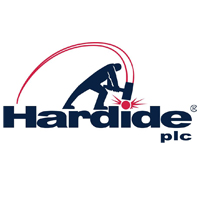In industries such as aerospace, where extreme operating environments push materials and components to the edge of their design capabilities, companies are continually seeking economically viable ways to maintain and improve performance. Article by Dr Yuri Zhuk, technical director, Hardide Coatings.
Corrosion, galling, fretting and wear are of particular importance: the leak-tightness of aircraft hydraulic actuators and rotating shafts depends on seals. In abrasive and corrosive environments, metal seal track or piston rod surface finish degradation can accelerate the seal wear rate by an order of magnitude. Plus, the high vibrations experienced during flight put considerable pressure on these components.
Hard Chrome plating
Hard Chrome Plating (HCP) been widely used in the aerospace industry to protect steel components against wear, corrosion and galling.
However, because its production process uses carcinogenic hexavalent chromium salts, its use has been banned in Europe under regulations that came into force in September 2017.
Additionally, the Occupational Safety and Health Administration (OSHA) is imposing increasingly tight restrictions in the USA.
Analyzing the HCP alternatives
HCP alternatives include thermal spray, in particular HVOF, and emerging processes such as electroless-nickel composite plating, explosive bonding, electro-deposited nanocrystalline cobalt-phosphorus alloys, and physical vapor deposition (PVD) coatings.
Although successful in some applications, each coating has limitations.
Thermal spray coatings can build a very thick and durable layer, but cannot be applied to internal surfaces, they are rough and porous, and often require post-coat grinding, which is not possible on intricate shapes.
PVD coatings can produce an extremely hard layer with accurately-controlled thickness, but are very thin, with limited load-bearing capacity, and line-of-sight application process makes coating deep bores and internals difficult. Various wet electroplating and electroless coatings are more suitable for internal surfaces and complex shaped parts, but have lower hardness than HCP and thus inferior wear-resistance.


